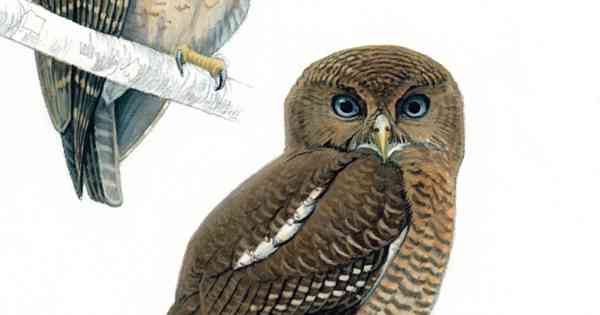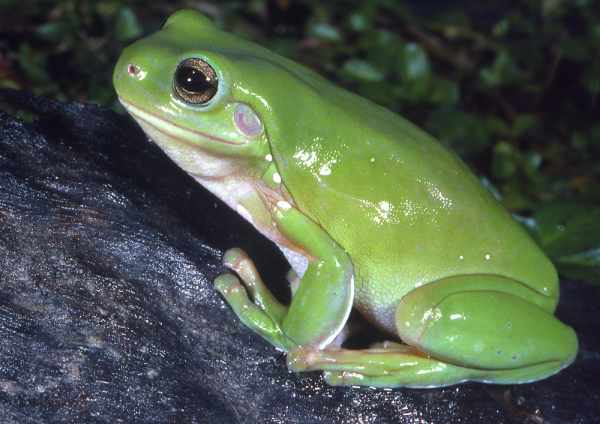As the sun dips below the horizon and the world plunges into darkness, a mysterious symphony begins to play in the night. While we’re all familiar with the sounds of crickets and owls, there exists a hidden world of creatures that add their unique melodies to the nocturnal cacophony—animals that chirp at night. These creatures, often overlooked in the daytime bustle, come alive after dark, filling the air with their enchanting sounds.
In this captivating exploration, we dive into the intriguing lives of these elusive nighttime chirpers, from the rhythmic songs of tree frogs that serenade us from wetlands to the mesmerizing melodies of katydids hidden in the treetops. We’ll uncover the secrets behind their nocturnal symphonies, the purpose of their calls, and the remarkable adaptations that allow them to thrive in the darkness. From the bustling wetlands to the depths of dense forests, join us on a journey into the enigmatic world of animals that chirp at night and discover the beauty and complexity of their after-hours performances.
The Symphony of the Nocturnal World
In the dead of night, when most creatures are settling into slumber, the symphony of the nocturnal world begins to unfold. Nature’s hidden orchestra, composed of animals that chirp at night, takes center stage. From the rhythmic croaking of frogs by the pond to the high-pitched trills of crickets in the meadow, the nighttime soundscape is a mesmerizing tapestry of life. Each species contributes its unique tune, creating a harmonious cacophony that has fascinated humans for centuries.
These nocturnal serenades not only serve as a testament to the resilience and adaptability of these creatures but also remind us of the profound connection between the natural world and our own existence. In this paragraph, we’ll delve deeper into the enchanting symphony of the night, exploring the diversity of nighttime chirpers and their vital role in the ecosystem.
Overview Of Animals that Chirp at Night
Crickets:

Crickets, those small, enigmatic insects, are famous for their nocturnal serenades. Male crickets produce their signature chirping sounds by rubbing their wings together, a process called stridulation. This mesmerizing song serves a dual purpose in the world of crickets: attracting potential mates and establishing territory.
Each species of cricket has its unique chirping pattern and frequency, allowing females to identify the right suitor in the chorus of nighttime sounds. These familiar chirps have become synonymous with warm summer evenings and are often heard in gardens, meadows, and fields. Crickets’ rhythmic calls contribute to the tranquil ambiance of summer nights, creating a connection to the natural world that’s both soothing and enchanting.
Katydids:

Katydids, also known as bush-crickets, are masters of nocturnal music. These fascinating insects create their distinctive chirping sounds by rubbing their wings together. The males’ repetitive “katy-did” or “katy-didn’t” calls resonate through the night, echoing in woodlands and gardens. Katydids’ songs serve as both a means of attracting females and a declaration of territory.
Their symphonies are incredibly diverse, with different species producing various melodies. As the night falls and darkness envelops the landscape, the chorus of katydids can be enchanting, transforming the nighttime into a musical wonderland. Their contribution to the nocturnal soundscape reminds us of the hidden life thriving in the darkness and adds a touch of magic to the warm, summer nights.
Tree Frogs:

Tree frogs are renowned for their lively nighttime serenades. As darkness falls, these amphibians come to life, producing a chorus of chirping, peeping, and croaking sounds. Their calls are part of their intricate communication rituals, primarily intended to attract potential mates. Various species of tree frogs have distinct calls, ranging from the high-pitched peeping of spring peepers to the resonating croaks of bullfrogs.
These amphibians often congregate around bodies of water, such as ponds and wetlands, to amplify their calls and increase their chances of finding a mate. The symphony of tree frogs can be both soothing and mesmerizing, creating a vivid soundscape that lulls us into the tranquil embrace of a summer night. Their enchanting calls are a reminder of the hidden beauty of the natural world, especially when darkness descends.
Cicadas:

Cicadas are the quintessential summer insects, known for their buzzing and chirping symphonies that fill the daytime and continue into the night. These robust insects belong to the order Hemiptera and are famous for their distinctive calls. Different species of cicadas produce unique sounds, ranging from the high-pitched buzzing of annual cicadas to the pulsating chorus of periodical cicadas emerging in massive broods.
Their cacophonous chorus can be deafening during the summer months, often becoming a defining feature of warm nights. Cicadas use their calls primarily for mating, with males serenading females in the treetops. Despite their volume, cicadas’ songs are an integral part of the summer soundtrack, evoking a sense of nostalgia and marking the passage of time as they emerge once every few years in impressive numbers.
Whip-poor-wills:

Eastern whip-poor-wills, nocturnal birds of the nightjar family, are known for their hauntingly repetitive calls that resonate through wooded areas during the nighttime. Their characteristic “whip-poor-will” song, which sounds like a mournful chant, serves as both a mating call and territorial proclamation. As darkness falls, male whip-poor-wills perch on branches and call out into the night, hoping to attract potential mates.
These birds are masters of camouflage, making them elusive despite their vocal presence. Their call, which can continue for hours, adds a mystical quality to the nocturnal soundscape, enhancing the ambiance of moonlit forested areas. Whip-poor-wills’ calls, a quintessential part of warm summer nights, are both eerie and enchanting, offering a glimpse into the secrets of the nighttime wilderness.
Chuck-will’s-widow:

The chuck-will’s-widow, a close relative of the whip-poor-will, is another nocturnal bird known for its distinctive and repetitive nighttime call. These birds are found mainly in the southeastern United States and produce a melodious “chuck-will’s-widow” song that resonates through the night. Similar to whip-poor-wills, these birds are masters of camouflage and prefer forested habitats.
Their call serves the dual purpose of attracting mates and establishing territories, making it a common sound in wooded areas during the breeding season. The chuck-will’s-widow’s song adds a touch of mystery to the moonlit nights of the American South, captivating listeners with its rhythmic cadence and evocative quality.
Owls:

Owls, those enigmatic and nocturnal birds of prey, are known for their hooting and chirping sounds during the night. These avian hunters use their calls for various purposes, including communication with other owls, establishing territory, and attracting mates. Different owl species produce distinct vocalizations, from the eerie hoots of the great horned owl to the sharp whistles of the Eastern screech owl.
While owls are primarily recognized for their nighttime activities, their calls can range from haunting to melodious, depending on the species. These calls contribute to the mystical and often eerie atmosphere of the night, evoking a sense of wonder and fascination with these mysterious creatures of darkness.
The Science Behind Nighttime Chirping
The nighttime chirping of animals is not merely a random cacophony; it’s a highly evolved form of communication deeply rooted in science. Each chirp, call, or song serves a specific purpose, whether it’s attracting a mate, defending territory, or warning of danger. Understanding the science behind nighttime chirping unveils a world of complexity and adaptation.
From the astonishing ability of certain insects to create songs inaudible to predators to the intricate ways in which animals modulate their calls to convey different messages, there’s a wealth of biological and ecological knowledge to be gained. In this paragraph, we’ll delve into the fascinating science behind these nocturnal sounds, shedding light on the mechanisms and purposes that drive the symphony of the night.
The Cultural and Mystical Connection
Throughout history, the chirping of animals at night has held a profound cultural and mystical significance in various societies around the world. These nocturnal sounds have inspired folklore, myths, and legends, often associated with the mysterious and otherworldly. From ancient Native American traditions that considered the call of the owl a harbinger of change to Japanese folklore that celebrated the songs of cicadas as a symbol of summer’s arrival, these nighttime chirps have been woven into the fabric of human culture.
Additionally, they’ve been seen as mystical omens or sources of guidance in some belief systems. In this paragraph, we’ll explore the rich tapestry of cultural and mystical connections that have been formed through the ages, shedding light on the spiritual significance of animals that chirp at night.
Conservation and Ethical Considerations
As human activities increasingly encroach upon natural habitats, the delicate balance of the nocturnal world faces numerous threats. The animals that chirp at night, often highly specialized and sensitive to environmental changes, are at risk. Deforestation, pollution, and habitat destruction can disrupt their breeding and foraging patterns, leading to declines in their populations.
In this paragraph, we’ll examine the conservation efforts aimed at protecting these creatures and their habitats. We’ll also delve into the ethical considerations surrounding the study and enjoyment of nighttime chirpers, emphasizing the importance of responsible observation and minimizing disturbance to ensure these captivating sounds continue to resonate in the darkness.
Final Words
The world of animals that chirp at night is a captivating realm, where biology, ecology, culture, and conservation intersect. Their symphonies remind us of the intricate web of life that thrives when the sun sets. From the mesmerizing sounds of crickets and katydids to the haunting hoots of owls, these nocturnal creatures are a testament to the beauty and resilience of nature.
As we navigate an ever-changing world, it’s essential to cherish and protect these enchanting voices of the night. By understanding the science behind their calls, respecting their cultural significance, and advocating for their conservation, we can ensure that the symphony of the nocturnal world continues to echo through the ages, connecting us to the mysteries of the natural world and inspiring wonder in the darkness.
Reference:
- https://sciencing.com/animals-chirp-night-8757028.html
- https://dogwoodalliance.org/2020/05/biodiversity-in-your-backyard-things-that-go-bump-in-the-night
- https://pestaid.com.au/what-noise-does-a-rat-make/

Zahra Makda
Growing up enjoying the beauty of my village, a good passion for nature developed in me from childhood. Following my passion for the natural world, I have chosen zoology for my graduation, during my undergraduate degree, I participated in many nature trails, bird watching, rescues, training for wildlife conservation, workshop, and seminars on biodiversity. I have a keen interest in invertebrate biology, herpetology, and ornithology. Primary interests include studies on taxonomy, ecology, habitat and behavior.









